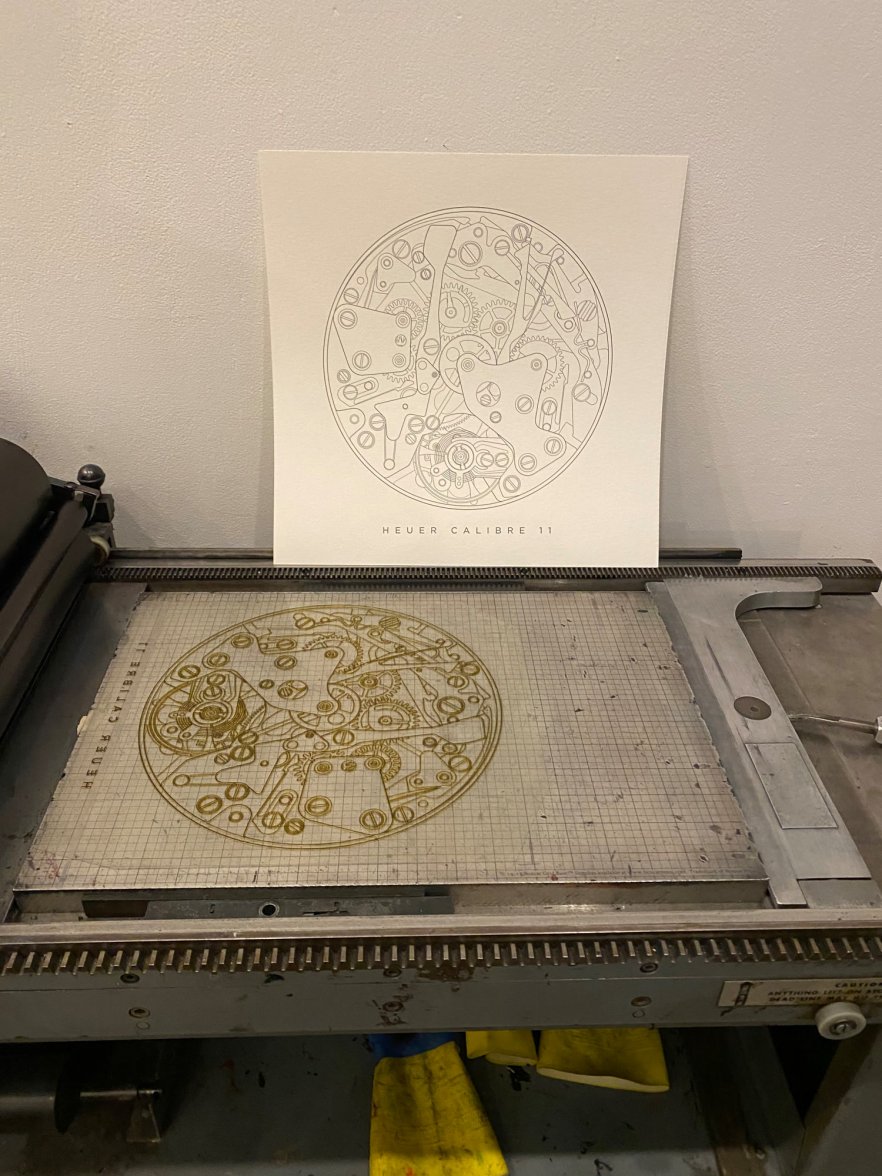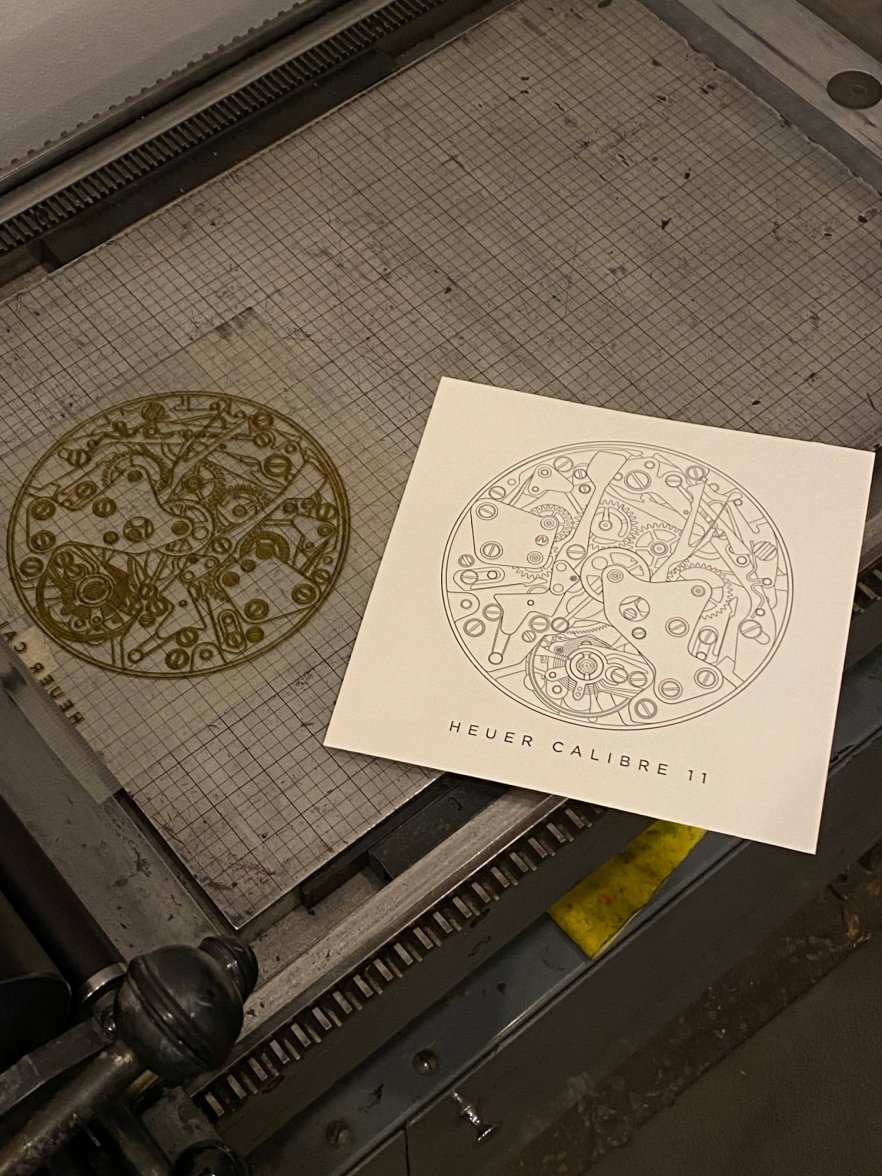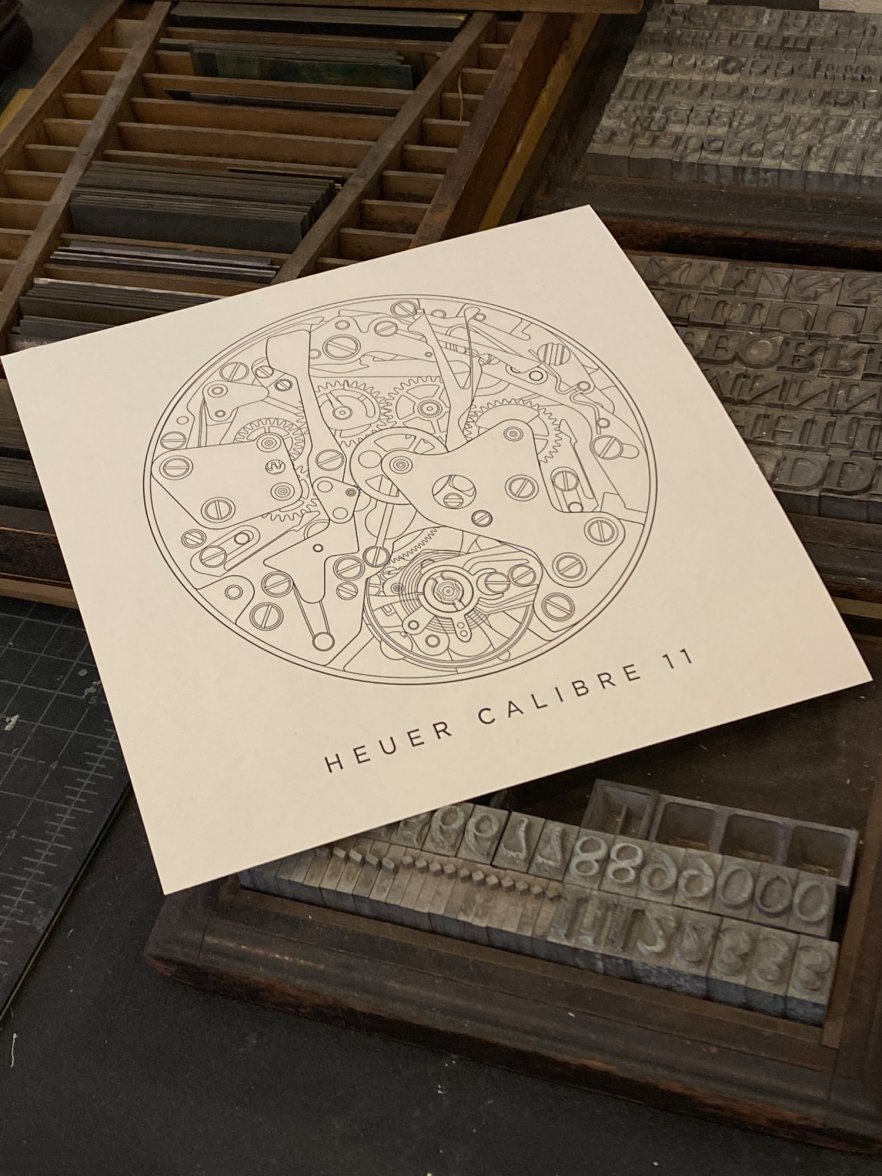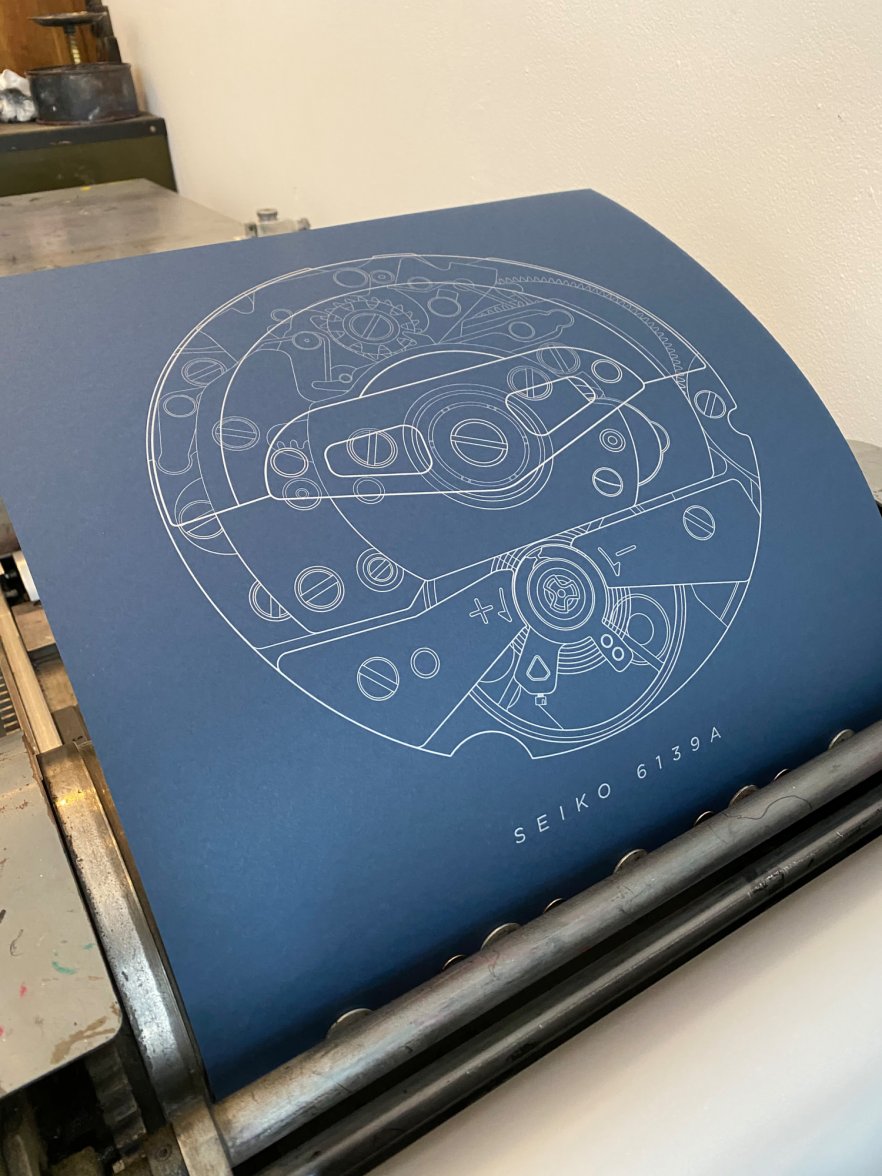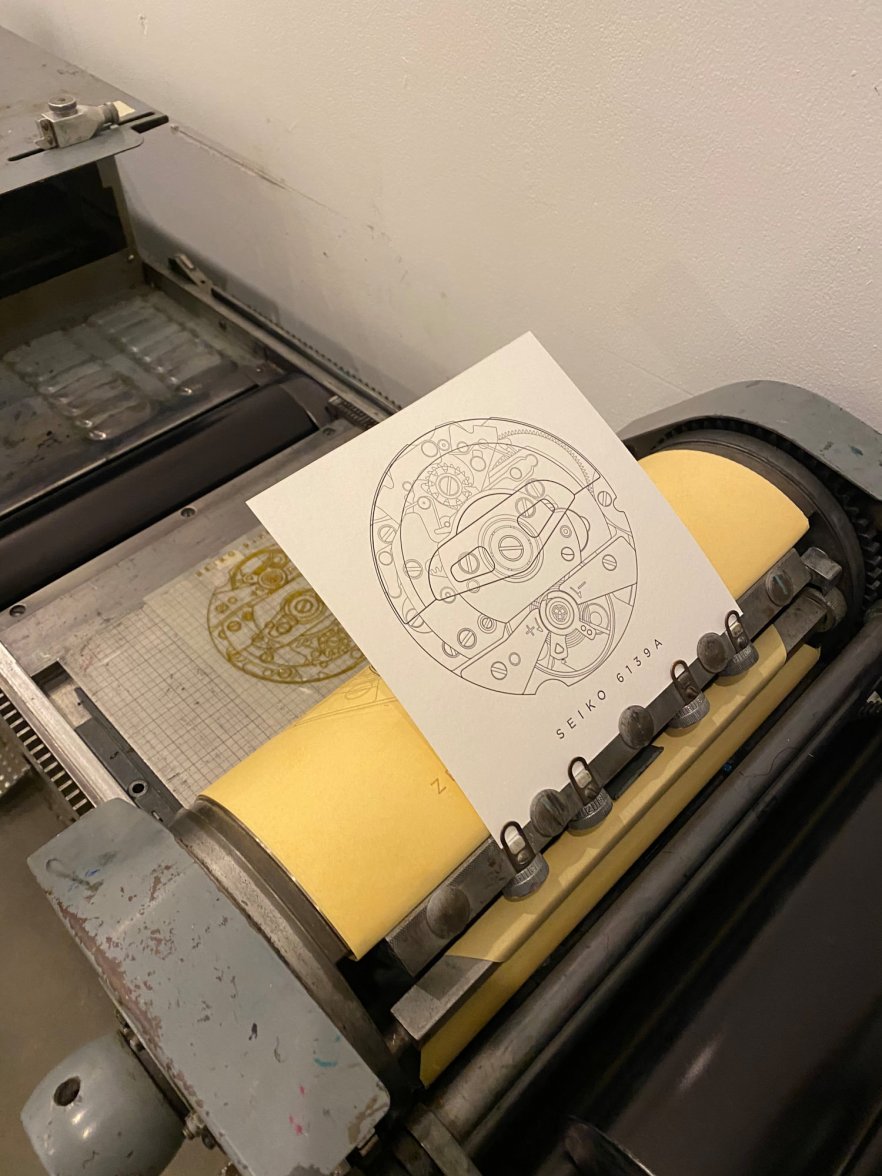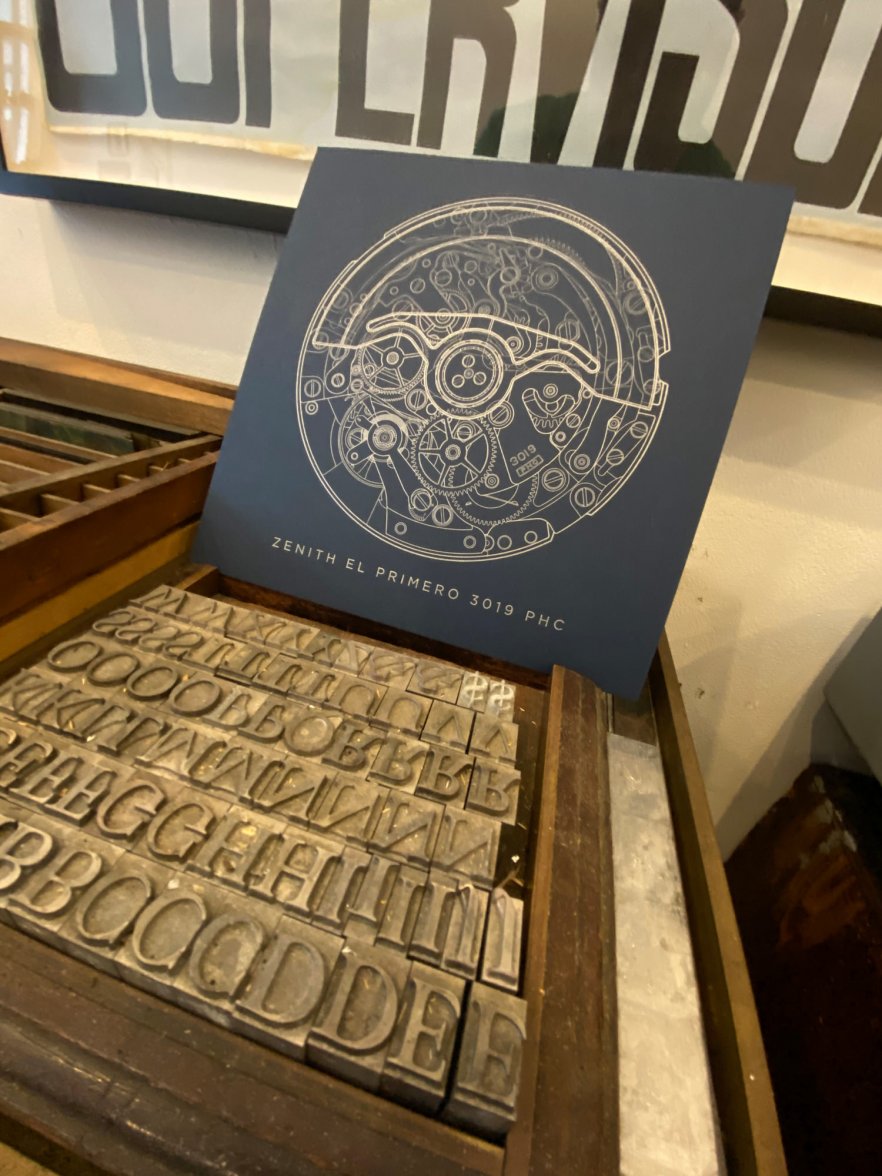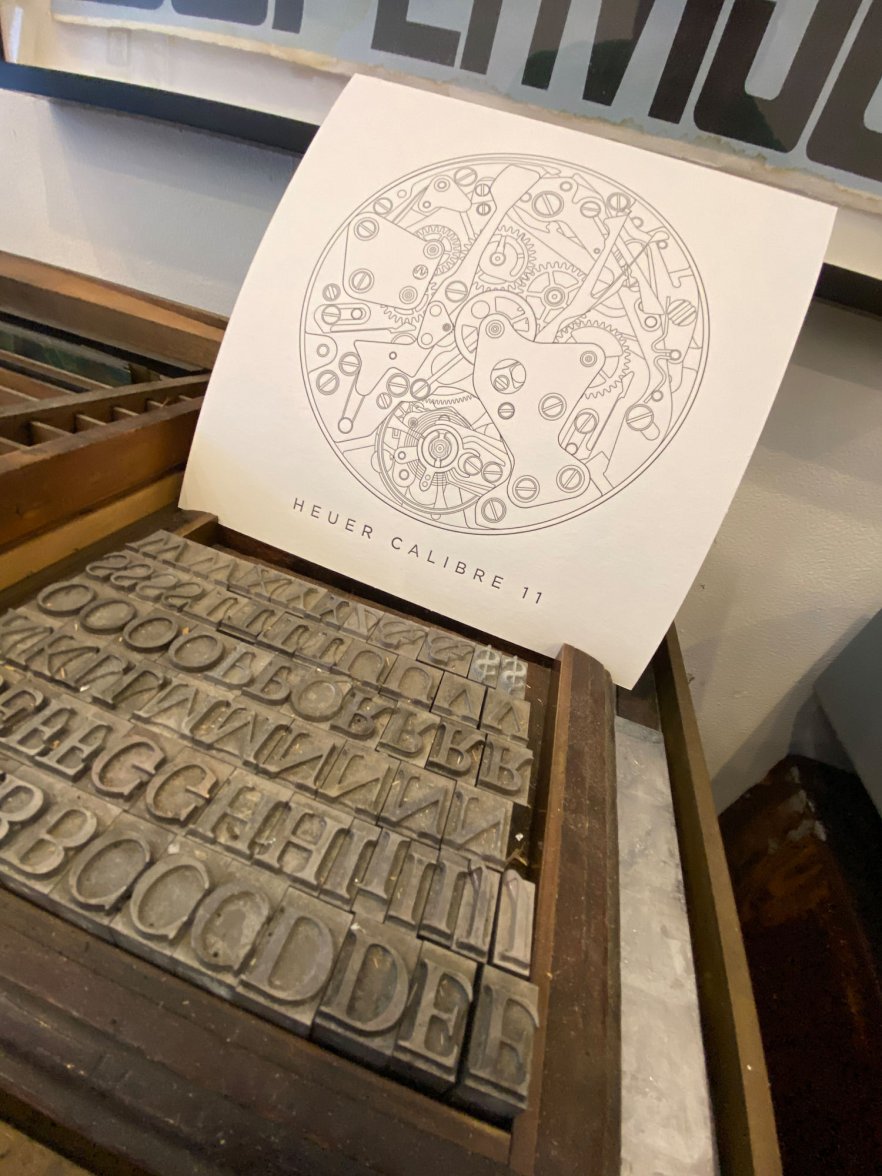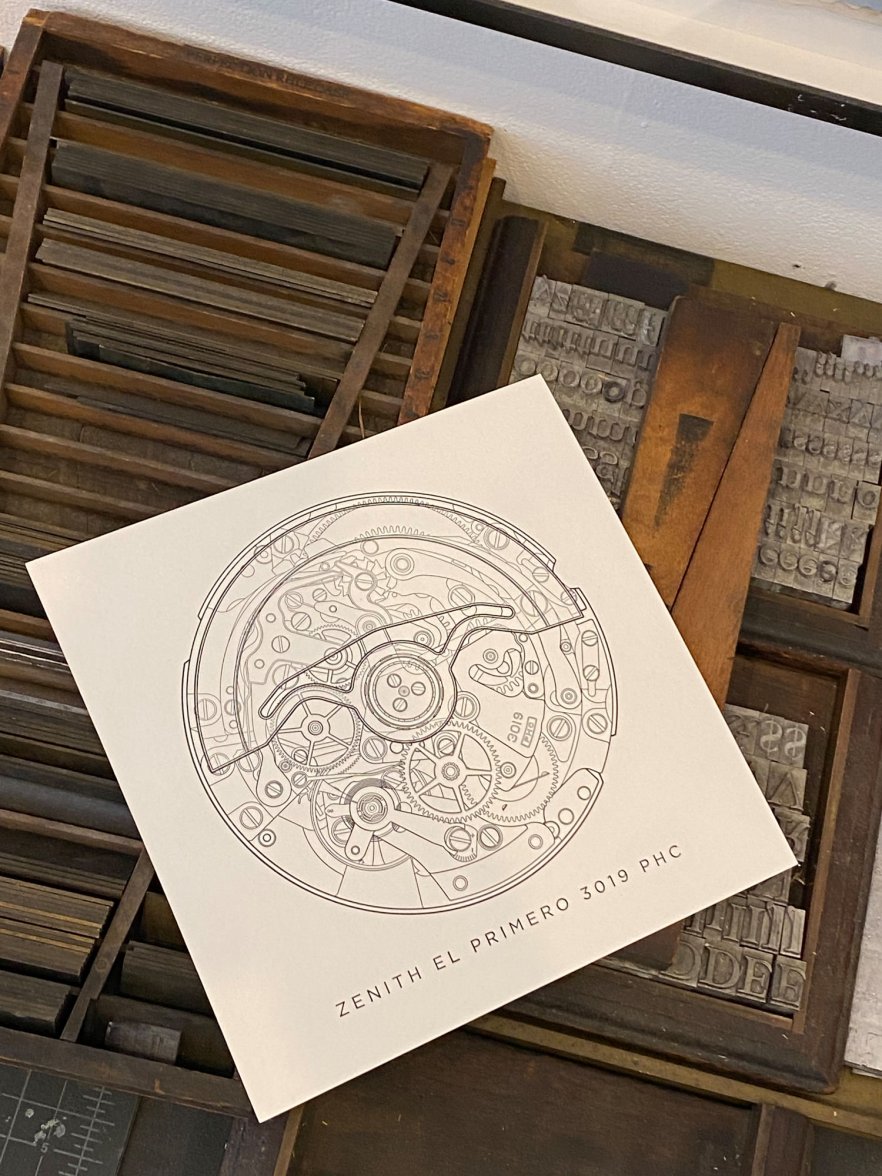Calibre11
·I came across the Springs + Gears account on Instagram and got in contact with William Bright who runs the account and has put together a print of the original Calibre 11 Heuer movement. Here's the background.
William is a designer and collector living in Brooklyn NY who has been interested in printmaking since college and only recently resumed printing with access to a Brooklyn collective letterpress printing studio on a Vandercook Universal I proof press. I asked William how he puts these together:
About the process
I print two sizes: both 8x8" and 15x15". I start with high-resolution reference photos of watch movements. As many as I can get my hands on. From there I use CAD software to draw as accurate a drawing of a movement, with clean lines, and precise measurements from the photos. From there once the movement is drawn, I import the drawing into Adobe Illustrator where I adjust various line widths, apply the text description and apply it to a paper size.
After the Illustrator file is proofed, I send it out to a company here in NY State called Boxcar Press. They take the file and create photopolymer plates. Those plates are then sent back to me and can be adhered to the letterpress machine and I can then print.
The paper I use comes from two sources. My white paper is Legion Bamboo paper, which is 90% Bamboo and 10% cotton. My dark blue paper is sourced from a mill called French Paper Company. They are 100% hydroelectric. Finally my black paper is called Sirio Ultra Black and is also from Legion paper company. It's the first paper both I and the print shop owner who advises me from time to time have found to take gold ink and make it shine. Most gold inks on black paper kind of absorbs and it ends up looking like a dull tan.
I print black on white paper, silver ink on the blue and gold on the black paper.
So far I have the following prints available:
- Omega 321
- Omega 1861
- Valjoux 72
- Longines 13zn
(the classic manual winding chronograph movements)
- Heuer Cal 11
- Zenith El Primero 3019 PHC
- Seiko 6139A
(the first automatic chronograph movements)
What I like about these is the old school way that the prints are made, which kind of mirrors these old movements themselves- would have been very easy to simply print from a CAD file, but no- they go to the trouble of making the plates
If you're interested in the prints you can find William's work here (links are purely for your interest- I have no financial interest)
You can find prints at:https://www.springsandgears.com and the Calibre 11 movement is here.https://springsandgears.com/products/heuer-cal-11
dc
William is a designer and collector living in Brooklyn NY who has been interested in printmaking since college and only recently resumed printing with access to a Brooklyn collective letterpress printing studio on a Vandercook Universal I proof press. I asked William how he puts these together:
About the process
I print two sizes: both 8x8" and 15x15". I start with high-resolution reference photos of watch movements. As many as I can get my hands on. From there I use CAD software to draw as accurate a drawing of a movement, with clean lines, and precise measurements from the photos. From there once the movement is drawn, I import the drawing into Adobe Illustrator where I adjust various line widths, apply the text description and apply it to a paper size.
After the Illustrator file is proofed, I send it out to a company here in NY State called Boxcar Press. They take the file and create photopolymer plates. Those plates are then sent back to me and can be adhered to the letterpress machine and I can then print.
The paper I use comes from two sources. My white paper is Legion Bamboo paper, which is 90% Bamboo and 10% cotton. My dark blue paper is sourced from a mill called French Paper Company. They are 100% hydroelectric. Finally my black paper is called Sirio Ultra Black and is also from Legion paper company. It's the first paper both I and the print shop owner who advises me from time to time have found to take gold ink and make it shine. Most gold inks on black paper kind of absorbs and it ends up looking like a dull tan.
I print black on white paper, silver ink on the blue and gold on the black paper.
So far I have the following prints available:
- Omega 321
- Omega 1861
- Valjoux 72
- Longines 13zn
(the classic manual winding chronograph movements)
- Heuer Cal 11
- Zenith El Primero 3019 PHC
- Seiko 6139A
(the first automatic chronograph movements)
What I like about these is the old school way that the prints are made, which kind of mirrors these old movements themselves- would have been very easy to simply print from a CAD file, but no- they go to the trouble of making the plates
If you're interested in the prints you can find William's work here (links are purely for your interest- I have no financial interest)
You can find prints at:https://www.springsandgears.com and the Calibre 11 movement is here.https://springsandgears.com/products/heuer-cal-11
dc
